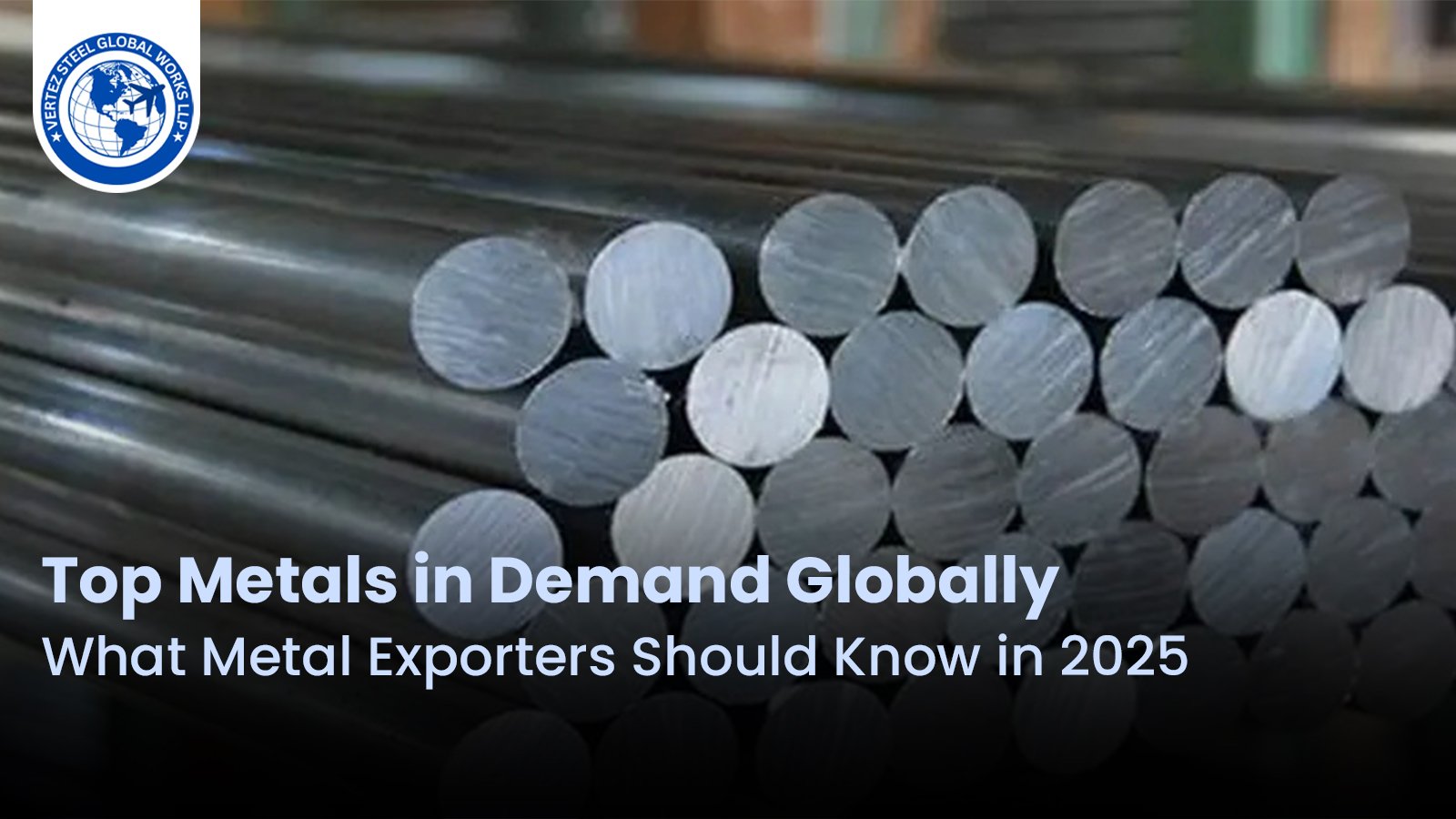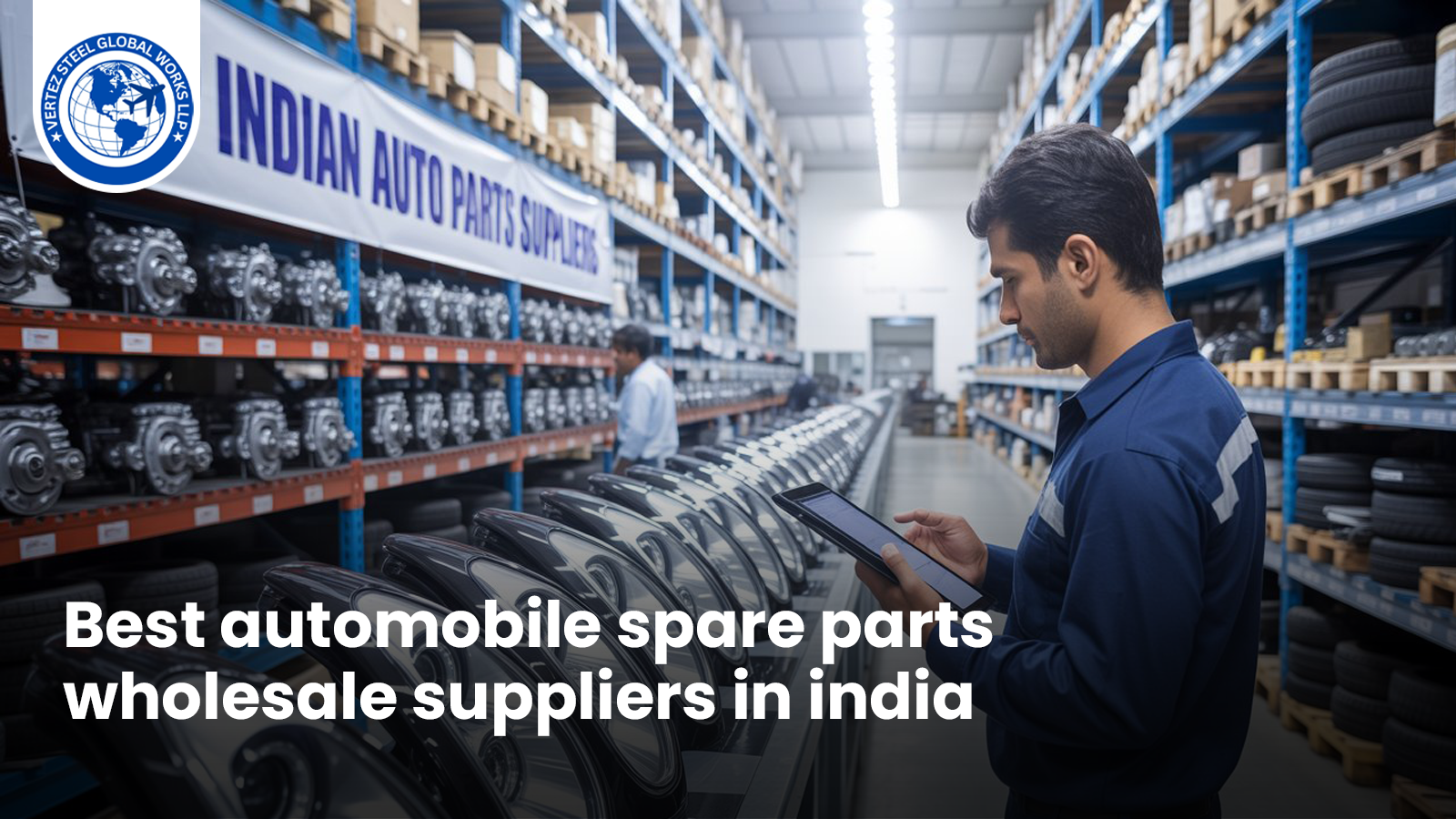Top Metals in Demand Globally: What Metal Exporters Should Know in 2025
The global metals industry is undergoing a profound transformation. As we enter 2025, the drivers of demand are shifting — not just toward quantity, but toward purpose. Infrastructure revivals, green manufacturing, renewable energy, and digital expansion are now shaping how metals are produced, traded, and consumed.
Iron, copper, and aluminium remain the industrial backbones, but newer demand centers — such as battery metals and recycled alloys — are rewriting trade priorities. For exporters, the key no longer lies only in volume or cost; it’s about aligning with industries that are shaping the future.
And in this article, we’re going to dive into which metals are leading the global demand surge, how trade flows are shifting, and what every metal exporter must know to stay ahead in 2025.
The Global Metal Landscape: Shifting Power and Purpose
Between 2024 and 2028, global metal consumption is projected to grow at a CAGR of 5.2%, driven largely by Asia-Pacific economies that continue to build, manufacture, and electrify.
Meanwhile, North America and Europe are evolving into innovation-driven markets — focusing more on low-carbon steel, recycled metals, and sustainable alloys. Africa and Latin America, on the other hand, are rising as promising sources of raw materials and refining hubs.
This global repositioning signals a clear message: exporters must now adapt to a demand landscape shaped by sustainability, electrification, and smarter logistics.
Top Metals in Demand: 2025 Outlook
1. Iron and Steel — The Unshakable Core of Industry
Steel continues to dominate global trade, with consumption expected to cross 1.9 billion tonnes by 2025. Construction, shipbuilding, defense, and infrastructure remain key drivers.
The biggest iron ore exporters — Australia, Brazil, and India — still hold the largest global market share, while the biggest exporters of iron bar trends are leaning toward customized, high-strength bars suited for modular and green construction.
With rising demand for quality-based differentiation, exporters who can deliver value-added steel rather than just raw materials are winning contracts across developing economies.
2. Copper — The Conductor of Modern Growth
Copper is no longer just an industrial metal — it’s an energy transition enabler. From electric vehicles to solar grids and data centers, copper is powering the next wave of global transformation.
Global demand is projected to rise at a CAGR of around 6.5% through 2030, while prices remain stable due to limited new mining projects. This supply pressure is leading to opportunities for refined copper exporters and world’s largest copper bottle exporters, as both industrial and consumer segments align toward durable, reusable metal products.
Exporters integrating sustainable processing and recycling into their operations are gaining preference across Western markets.
3. Aluminium — Lightweight, Limitless, and in Demand
Aluminium’s unique combination of strength, corrosion resistance, and low density keeps it in the spotlight. The metal’s demand is set to grow at a 5.8% CAGR, led by packaging, automotive, and aerospace sectors.
Recycled aluminium now represents over 35% of total aluminium trade, offering exporters both environmental leverage and cost stability. Governments promoting circular economy models are also pushing aluminium exports into a new era of efficiency and green compliance.
4. Nickel and Lithium — The Battery Boom Backbone
Energy storage and electrification are fueling an unprecedented surge in demand for nickel and lithium. Together, these metals are forecasted to experience over 240% growth by 2030, as EV adoption accelerates and renewable capacity expands.
Exporters who secure long-term supply agreements in these sectors are setting themselves up for sustainable growth. The challenge now lies not in finding buyers, but in meeting the purity and traceability standards required by global battery manufacturers.
5. Zinc and Brass — The Unsung Growth Drivers
While often overshadowed by base metals, zinc and brass play vital roles in construction, home décor, and engineering.
Zinc’s 4.1% CAGR growth forecast highlights its continued importance in galvanizing and corrosion protection. Simultaneously, brass exporters — especially in India and Vietnam — are benefiting from increased demand for custom fittings, architectural components, and eco-friendly alternatives to plastic and synthetic materials.
Their steady rise reflects a market where craftsmanship meets utility, strengthening their place in global metal trade.
From Insights to Action: Key Lessons for Metal Exporters
1. Diversify Your Metal Portfolio
Depending on one or two commodities can expose exporters to severe price swings. Those who diversify — for example, combining iron, brass, and aluminium exports — can stabilize earnings and respond more flexibly to market cycles.
2. Sustainability Defines Credibility
Exporters today are being evaluated not just on price, but on process. Green steel, traceable copper, and low-emission production models are becoming contract prerequisites. ESG compliance is not just a trend; it’s the new entry standard for global trade partnerships.
3. Technology and Traceability
Automation, AI-based demand forecasting, and blockchain-based trade verification are transforming logistics. Exporters using these technologies reduce errors, build trust, and streamline customs operations. Digital readiness is quickly becoming a strategic advantage.
4. Shifting Trade Corridors
Global trade patterns are evolving. The India–Middle East–Europe corridor is gaining importance, while new bilateral routes in Africa and Latin America are diversifying the export network. Exporters attuned to these transitions can move faster than the competition.
Case Study: The Power of Adaptability
A mid-sized Southeast Asian exporter, once limited to iron bars, saw slowing growth post-2023. Rather than retreat, the company pivoted — expanding into aluminium sheets and copper wiring to align with renewable energy infrastructure projects.
Within 18 months, exports rose 28%, logistics efficiency improved by 17%, and new clients emerged across the Middle East and Eastern Europe.
The lesson is clear: in 2025, the most successful metal exporters aren’t the largest — they’re the most adaptive.
Emerging Data-Driven Trends
- Recycled metal trade to grow at 7% CAGR by 2028
- Green steel production expanding with 30+ hydrogen-based plants globally
- B2B digital marketplaces increasing transaction volumes by 40% year-over-year
- Nearshoring trends reducing lead times by up to 20%
- Government-backed export incentives supporting infrastructure-linked metal trade
Quick Insights for 2025
- Copper prices are up 22% since 2023.
- India contributes 4.3% of total global steel exports.
- Australia and Brazil jointly control 70% of global iron ore exports.
- Brass exports from South Asia rose 18% in 2024.
- Lithium and nickel shipments expected to triple by 2030.
Conclusion: From Iron Foundations to Intelligent Trade
As we’ve explored from start to finish, 2025 represents more than just another growth cycle — it marks a strategic turning point for the global metals trade. The industry is shifting from extraction to innovation, from mass production to smart production.
For exporters, success depends on reading these currents early, diversifying strategically, and aligning with the industries shaping tomorrow’s world. The global appetite for metals may be timeless — but the rules of the trade have evolved.
Standing at the forefront of this evolution, Vertez Steel Global exemplifies how forward-thinking exporters can thrive by combining precision, sustainability, and strategic insight. With an expanding international network and a strong commitment to responsible sourcing, Vertez continues to strengthen its role as a reliable global partner in the metal export industry.


